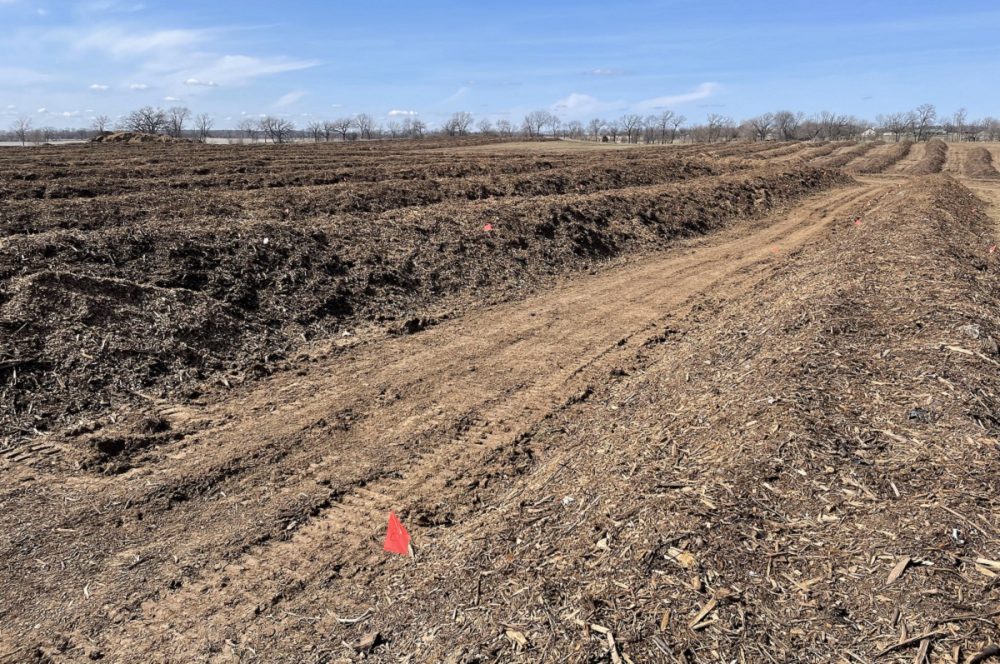The first incident of avian influenza in a commercial flock of birds in the United States was on February 8, 2022.
In just two short years, the bird flu has affected more than 97 million commercial and backyard birds across the country, as it is spread quickly by wild bird droppings. The number of domestic birds affected ebbs and flows in different areas based on movement and migration of wild birds, with higher numbers in the fall and spring.
This rise of the highly pathogenic avian influenza (HPAI) has increased the need for experts who can respond quickly to detections of the flu to mitigate the virus’ impact on U.S. poultry production and trade.
One of those experts is a faculty member at the University of Wisconsin-Stevens Point.
Rob Michitsch, a professor of soil and waste resources and a specialist in using composting for animal mortality management, is among 40 compost subject matter experts across the nation and six in the state. These experts are called on by the U.S. Department of Agriculture (USDA) when an HPAI outbreak occurs to make sure that deceased birds are disposed of quickly and carefully through composting to stop the spread.
Michitsch and Dan Kroll, a waste management specialist with the Wisconsin DNR, were recruited to the composting team by Rebecca Podgorski with the Wisconsin Department of Agriculture, Trade and Consumer Protection, and Doris Olander with the USDA’s Animal and Plant Health Inspection Service. A UWSP master of natural resources student, Alex Thomas, and UWSP alumni Kelly Adlington have also become involved.
Michitsch has taken two leave of absences from his teaching duties to attend large scale farm outbreaks. Several federally funded teams attend to the disposal of the affected birds and eggs and cleaning of the facilities.
“If the USDA calls, we go if we can,” he said. “Once we arrive, it’s a 28-day protocol in which we compost the deceased birds, marking the time and temperature each day. At 14 and 28 days we turn the piles and check for decomposition. We are making sure we have a high, consistent temperature to kill the virus.”
For large poultry farms, it may take three months of continuous compositing, each pile with a 28-day process, he said. Once the piles are deemed free of the bird flu, the farmers can use it as fertilizer.
“I’ve always had an interest in composting,” said Michitsch. “I first began studying composting and anaerobic digestion (using bacteria to break down organic matter) for waste management while working on my master’s degree at the University of Guelph in Ontario, Canada. My Ph.D. work at Dalhousie University in Nova Scotia involved how to compost slaughterhouse waste, which got me into the area of mortality composting.”
 Millions of domestic birds have been lost to the bird flu since 2022. Composting piles like these help stop the spread of the disease.
Millions of domestic birds have been lost to the bird flu since 2022. Composting piles like these help stop the spread of the disease.
This work may be needed for animal disease outbreaks as well as in areas of natural disasters, when large numbers of animals are killed, he said, as well as for natural domestic animal deaths.
Michitsch’s work also led him to study the use of composting to eradicate the prions that cause chronic wasting disease in deer, elk, moose, reindeer and caribou. He has worked closely with UWSP students on that research, hoping to find new ways to dispose of infected animals outside of using landfills.
He also traveled to Wyoming as a consultant for researching chronic wasting disease in elk, setting up composting bins like the ones he uses in Wisconsin for deer.
Everything he does in the field is used back in his classroom. “I’ve brought my animal management experiences back to students in different ways, from my solid waste and composting classes to discussing how decomposing animals might affect plant growth.
“I’ve also brought in fellow USDA-affiliated experts to talk to students about mortality management at a federal and state level,” he said, “as it affects the work of students in soils, waste management, water resources, fisheries, wildlife and environmental education.”
While rates of HPAI in domestic birds rise and fall, it is not going away, Michitsch said. There have been vaccination trials that have worked in endangered condors, he added.
“This outbreak is hard on the farmers, the owners and those who work with these animals every day,” he said. “And while we are trained on what to expect and how to react, it can be hard on us too. It takes a social toll on everyone involved.”
Michitsch is hoping to educate more people about his work in animal composting June 23-26, 2025, when UWSP hosts the International Symposium on Animal Mortality Management. More than 300 people from around the world will attend hands-on demonstrations as well as visit the Food + Farm Exploration Center in Plover, where a soil pit will be created to look at new ways to dispose of large, naturally deceased animals.
Before that, in January 2025, Michitsch will travel to the Philippines with a small USDA team to help with control of African swine flu. He hopes to invite people there to the UWSP symposium to learn more.
“Every time we respond to an incident, it’s different,” Michitsch said. “We are constantly fine tuning the process and learning from our experiences, so we have it down. It is necessary work.”
